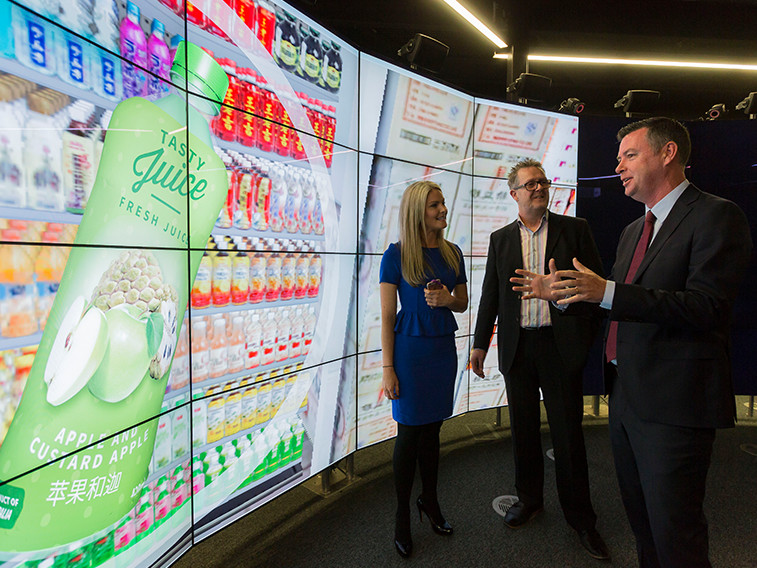Online retail sales growth slowed in May following a fairly strong April


Insight
A new partnership between Monash University’s Food Innovation Centre and China’s largest food processing organisation, COFCO, is aimed at helping Australians better understand the Chinese retail environment.

China’s COFCO has partnered with Monash University’s Food Innovation Centre, giving Australian farmers and food manufacturers access to cutting-edge technology, valuable intellectual property, real-world testing and, possibly, capital.
Until China opened its economy in the 1980s, the organisation called COFCO (China National Cereals, Oils and Foodstuffs Corporation) was the country’s sole exporter and importer of agricultural products.
Today, it’s a diversified conglomerate with 60,000 employees spread across the globe. It has billions at its disposal and, for example in 2011, snapped up Queensland’s Tully Sugar for $136 million.
For Australian farmers, a new partnership with Monash University is creating opportunities to better understand the Chinese retail environment.

In October 2016, a Food Innovation Centre was launched at Monash University, with backing from COFCO and after a successful transfer from Mondelez Australia, where it was originally located.
Professor Nicolas Georges, Director of Food and Agriculture Innovation at Monash University, emphasises it promises far more than the usual industry research facility tie-up.
“COFCO is making available its consumer research. That’s precious information about the sensory and taste preferences of Chinese consumers,” Professor Georges says.
“I’ve worked for multinationals and know that kind of data is usually never shared. What’s more, I’d be surprised if COFCO, given its record of buying into companies, didn’t want to take equity stakes in the more promising ventures that pass through the centre.”
So why all this love from COFCO? “The Chinese are obsessed with food security,” Professor Georges says. “They want to establish global supply chains and foster long-term relationships.”
The Food Innovation Centre will work in the following way. Let’s say you want to corner the Chinese market for soy sauce-flavoured finger limes. For a fee of $10,000 to $30,000, the centre will do the necessary market research and test the product; first virtually, then in the real world. Following that, it will help navigate the not insignificant cultural, regulatory and certification hurdles that need to be cleared to enter the Middle Kingdom.
“You can’t just slap a Chinese-language label on an existing product designed for Westerners and expect the Chinese to buy it,” Professor Georges says.
“For example, COFCO’s data demonstrates that the Chinese don’t like powerful flavours. So that’s one tweak that often has to be made. The centre can arrange to survey Chinese consumers. The survey investigates how a new Australian product relates to other products consumers already buy, as well as its overall appeal. Then the centre will investigate how the new product can differentiate itself. It will also test a few packaging and communication scenarios to discover what resonates with the target market.”
So far, so good. But here’s where things get interesting.
“Monash has advanced, immersive, large-scale visualisation facilities,” says Professor Georges. “That means prototypes can be road-tested in cyberspace. Using 3D modelling, and what will soon be virtual reality, you can place your product in its competitive environment – typically a supermarket shelf. That can reveal design flaws, such as the packaging fading into the background.”
Following that, new products can be tested in the real world through COFCO’s e-commerce website www.womai.com. This allows an agribusiness one last chance to perfect its product offering before embarking on the time-consuming and costly task of trying to get it stocked in bricks and mortar outlets.
“Nine out of ten new food products in the fast-moving consumer goods segment fail,” observes Professor Georges, adding that this is based on both his experience and on published data. “By going through the process I’ve just outlined, agribusinesses triple or quadruple their likely success rate. At the very least, they can avoid expensive mistakes by identifying problems earlier rather than later.”

With a range of Chinese e-commerce platforms coming online in Australia, there couldn’t be a more fortuitous time for a facility such as this to open. Alibaba, one of the world’s fastest-growing trading channels, recently opened an office in Melbourne to cater for Australia and New Zealand.
Current clients at the Food Innovation Centre fall into three categories. “There are primary producers,” says Professor Georges. “There are food manufacturers, like your hypothetical soy-sauce flavoured finger limes producer. But it’s the third type of client that’s perhaps the most promising.
“These are businesses that produce a single ingredient and want to enter into an arrangement with a Chinese company.” (For example, an Australian co-op selling buckwheat might want to partner with a Chinese baked products company to launch a gluten-free bread.)
Professor Georges concedes the Food Innovation Centre will be too costly for many Australian farmers. However, he is confident it will benefit them, directly or indirectly.
“Firstly, we’re working with industry associations, such as Meat and Livestock Australia, to allow farmers easier access to the centre. Secondly, if it succeeds in its mission, the centre will both increase demand for what farmers already produce and help create new markets. Both COFCO and the university are determined to create innovative food products – the kind of products that will throw up lots of lucrative opportunities for Australian farmers.”
© National Australia Bank Limited. ABN 12 004 044 937 AFSL and Australian Credit Licence 230686.